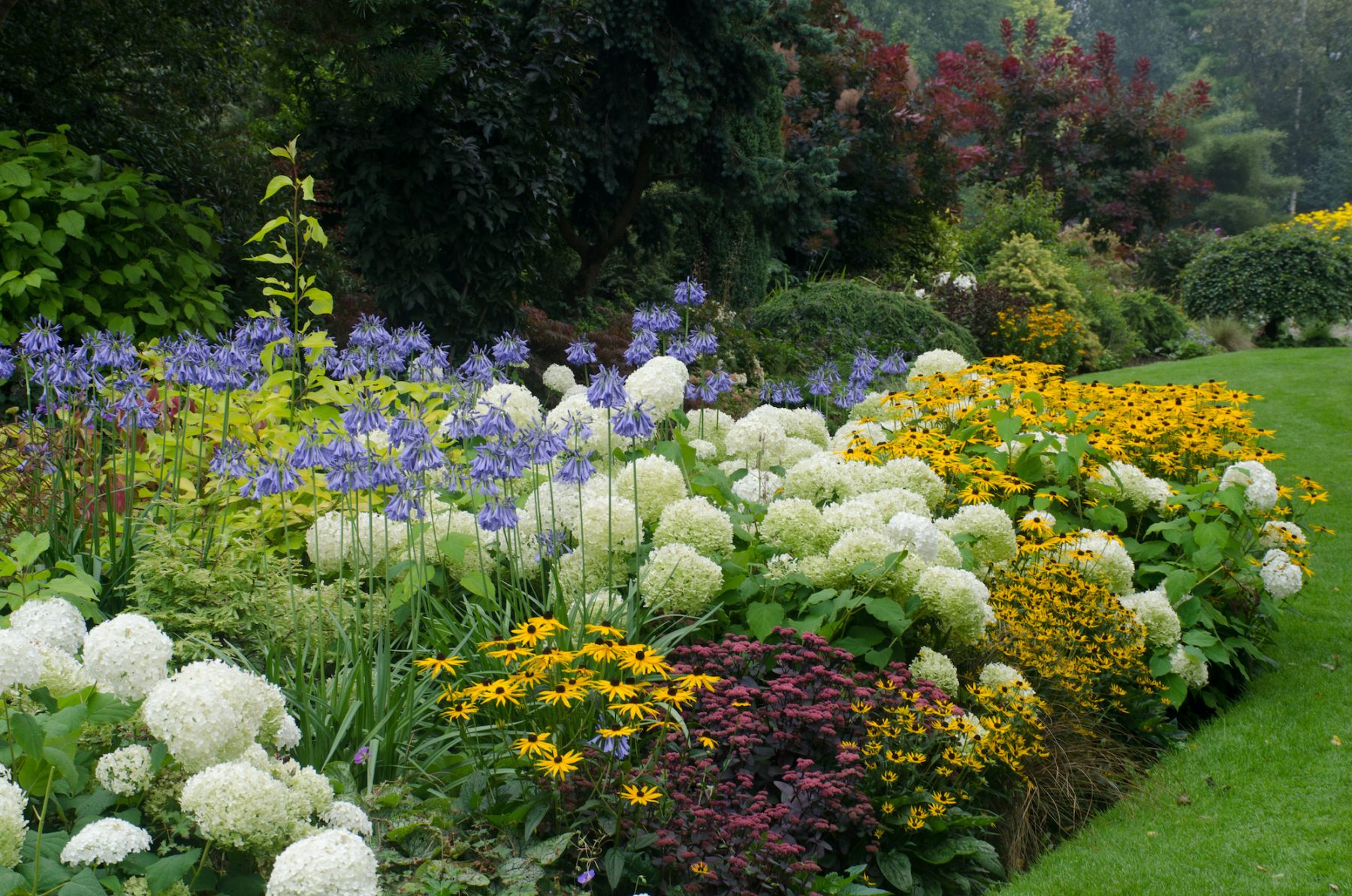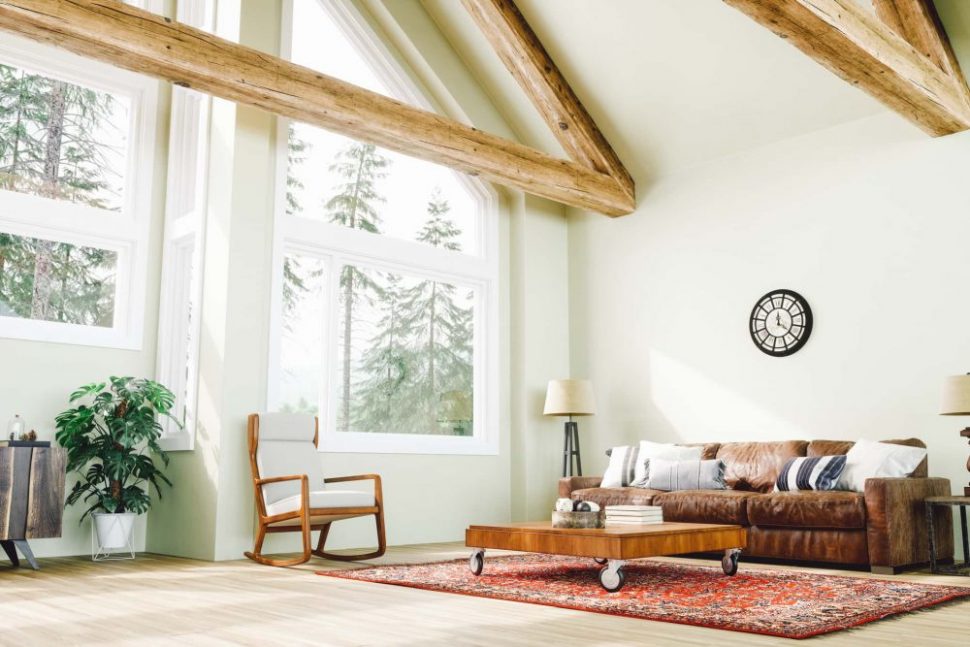How to Achieve an Elegant Garden for Your Home at The Cliffs
Each area of The Cliffs is characterized by its own natural beauty, from Lake Keowee to the Blue Ridge Mountains, you will find views everywhere you look. An elegant garden not only enhances the curb appeal of your property, it boosts the value of your luxury home as well. Our plant recommendations are tailored to enhance the aesthetic appeal of your luxury home based on the region you live in.
You can enhance the natural beauty in your surroundings when you know what plants are appropriate for your area. Continue reading for our list of what to grow in your garden below.
Elegant Garden Suggestions for The Asheville Region
Create a garden that captures the beautiful charm of this mountain town. Consider bright colors in your plantings. Select yellow blooms that embody the light-hearted nature of the town, pinks and reds that represent its colorful spirit, or purples and blues that accentuate the mountain views.
1. Black-Eyed Susan
With a similar look to coneflowers or daisies, black-eyed susans are a wonderful addition to any garden in this region. Also known as Rudbeckia, these hardy flowers come in various varieties of perennials and annuals. ‘Indian Summer’ black-eyed susans are an annual that offers large flowers with mesmerizing golden petals. For a perennial variety, plant the ‘Aries’ rudbeckia, which comes back year after year and grows flowers that fade in color from dark to light.
2. Hollyhock
Hollyhocks are perfect for planting in areas where you want height. These tall, flowering plants are a statement piece in any elegant garden. They can grow up to six or seven feet tall with vertical stalks that are adorned with large flowers. One of the most beautiful varieties of hollyhocks include ‘Peaches ‘n Dreams’, a peony-like flower with pastel petals in a range of pinks and oranges.
3. Bleeding Hearts
More delicate than their name suggests, this plant produces striking heart-shaped blossoms. Many varieties have a long bloom season, beginning in the spring and lasting well into the fall. Green fern-like foliage adds beauty to the landscape when they’re not in bloom. Consider the ‘Fringed Bleeding Heart’ in your garden beds for year-long interest.
4. Daylily
Daylilies are as adaptable as they are beautiful. Zone 7 is best suited to deciduous daylilies that go dormant in the winter. The low maintenance nature of daylilies makes them an ideal choice when compared with flowers such as roses or peonies. ‘Red Volunteer’ is known for its velvety soft, rich red blooms. Consider planting them next to other colorful flowers to make them pop.
5. Clematis
Clematis is a hardy climbing vine that comes in different flowering forms. There are endless varieties and colors of flowers, from tiny blooms to extravagant ones. Clematis ‘Pink Champagne’ will shine against a trellis in your garden or your home’s exterior. Its fuschia-colored flowers can reach almost 8 inches in diameter!
Elegant Garden Suggestions for The Mountain Region
This region is characterized by the lush greenery that blankets the Blue Ridge Mountains. When hiking, you will notice wild ferns stretching out and brushing against you as you walk past. Make your elegant garden look wild and natural by choosing plants that mimic that feeling. Plan ahead for autumn by planting ornamental trees that will turn brilliant colors in the fall.
1. Lamb’s Ear
Consider lamb’s ear for filling gaps in your garden beds. As a low-growing plant, they work well for adding density to a landscape. The leaves are shaped like the ear of a lamb, hence the name. Its leaves are pale green and soft to the touch. In the winter, lamb’s ears shed their dying leaves and sprout new growth come spring. ‘Helen von Stein’ is a wonderful variety with an extended leaf span.
2. Salvia
Although part of the mint family, salvia looks more similar to lavender. Their strong scent attracts pollinators such as bees, butterflies, and even hummingbirds. You can find varieties in both annuals or perennials, depending on the needs of your landscape. The ‘Pineapple Sage’ shrub grows wispy, scarlet-colored blooms that look majestic against a mountain backdrop. Outside of zone 8-10 they are grown as annuals.
3. Japanese Maple
Japanese maples can grow anywhere from 2 to 30 feet tall depending on the species. Foliage colors range from deep shades of purple to light orange at various times of the year. For incredible color, try the ‘Golden Full Moon’ maple. In the spring, its leaves are a vibrant shade of yellow, but gradually turn to green. As soon as the temperature dips back down in the fall, the outer edges of the leaves turn a bright red with the center fades into gold.
4. Smoke Tree
These small, ornamental trees make excellent accents for layering landscape views. The name comes from his plume-like clusters of flowers that look almost like puffs of clouds or smoke. Hazy mountain peaks set off by the purple-hued leaves of a ‘Royal Purple’ smoke tree are a breathtaking sight.
5. Bluebells
Bluebells are a beautiful flower to look at and are the perfect embellishment for any mountain home. Place them in areas with lots of shrubbery and green vegetation to add a touch of whimsy and color. Note that all bluebells are not the same, however. Look for Spanish bluebells which are different from English ‘common’ bluebells. Spanish bluebells produce more flowers per stalk, and their color is a deep lavender in the ‘Excelsior’ variety. If you are looking for white flowers choose ‘White City’, and for pink ones choose ‘Rosabella’.
Elegant Garden Suggestions for The Lake Region
Landscaping in The Lake Region should emulate the movement of water. Think tall grasses that sway in the wind and plenty of flowers or shrubs that create a soft setting. Like The Mountain Region, the vibrant colors of Lake Keowee are complemented by pops of blue and green. Lake homes tend to feature moisture-loving plants, such as hydrangeas for a traditional Southern look or lily of the valley if you prefer a cottage-feel to your landscaping.
1. Hostas
Hostas are among the lowest-maintenance plants you will find at a nursery. With so many varieties, you can create a variety of looks with this type of plant. The ‘Neptune’ hosta is distinguished by its wavy leaves, making it a perfect addition to any lakeside garden. The bright yellow leaves of the ‘Orange Marmalade’ variety are framed by dark green edges. Add ‘Blue Mouse Ears’ to containers or smaller areas.
2. Hydrangeas
Hydrangeas are often used in a variety of landscape styles. As the focal point of your garden, they can be combined with other plants to create several different looks. For a classic feel, blue or white varieties. Pink hydrangeas or any color of the ‘Oakleaf’ variety are ideal for achieving a cottage-like effect. The ‘Gatsby Pink’ features tall clusters of blooms in a soft pink.
3. Japanese Cedar
Cedar, like its Japanese Maple counterpart, offers a wonderful evergreen color appearance in the warm months and a bronze appearance in the fall and winter. Best for accenting corners of your garden, they can reach heights of 50 to 70 feet. When mature, a ‘Japanese Dwarf Cedar’ reaches only ten feet in height. Tuck it into any gaps that will fill in over the years.
4. Lavender
This plant’s sweet scent and decorative appearance make it a fine choice for lakefront terrains. Keep it in a planter where you can control the amount of water it gets as they prefer drier, well-draining soil. Spanish lavender ‘Purple Ribbon’ produces deep purple flowers that are beautiful when dried.
5. Switchgrass
These ornamental grasses can be found in a variety of colors, textures, shapes, and sizes. Their versatility allows them to add a final touch to any landscape. You can use them in borders or to add height to an elegant garden. Plus, they are extremely hardy and can grow in almost any condition. Gorgeous deer-resistant varieties to use near the water’s edge include ‘Shenandoah’ and ‘Northwind’.
Life at The Cliffs: A Place of Natural Beauty
Homes at The Cliffs have been designed to make the most of architecture and the natural landscape, with the gardens seamlessly blending the two. There is so much beauty here, from the grand mountain backdrop to the wild Oconee Bells that grow in our communities. Get in touch with our team for more information about the regions mentioned throughout the blog.






